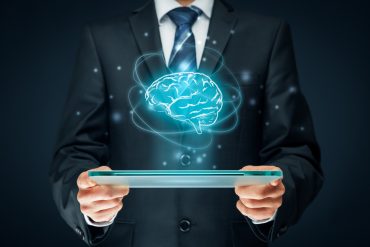
While some experts may pit tech versus liberal arts, liberal arts and humanities might be the key to tackling the consequences of tech in our lives.
AI is the future. Schools are pushing their STEM programs to prepare. Companies are scrambling for talent. Liberal arts majors are shaking all over the world.
That last sentence may not be precisely accurate. A decade ago, Bill Gates famously declared that a liberal arts education would hold graduates back in the new tech economy. Steve Jobs declared a few days later that it was a blend of both technology and the arts that would help us create truly great things.
Now, more companies are siding with Jobs on this issue, walking back on the past years’ heavy and exclusive focus on the tech side. Let’s explore some of the ways the liberal arts and technology might bring out the best in each other.
See also: Recruitment Chatbots Better Engage Today’s Workforce
Tech is creating jobs for liberal arts majors
New artificial intelligence products are making use of the skills of liberal arts majors. Many of these AI initiatives are customer-facing, dealing in some part with customer service and communication. Because these applications require machines to deal with people, pure tech skills aren’t much help when it comes to the customer journey.
Companies are bringing in liberal arts expertise to:
- Build more human chatbots — Conversational design is a growing field designed to make bots easier to talk to. Humans are more likely to initiate conversational approaches. The humanities can bring vital skills in communication, social understanding, and creative thinking.
- Build a better user experience — The creative thinking of liberal arts also helps companies design tech and artificial intelligence products with intuitive user experiences. Story and experience architects help build a cohesive experience as customers navigate these AI products.
Backgrounds in acting, writing, and even music can fuel the necessary creativity businesses need for their AI initiatives. Because people still don’t fully trust artificial intelligence, the social understanding liberal arts bring to the table could help move that needle as well.
Liberal arts guides AI
Liberal arts is breaking barriers with bots as well. The beginning of artificial intelligence produced some pretty clunky options. Robots didn’t know how to interact with humans, couldn’t manage the nuance of human language, and required a lot of workarounds to get things done (remember all those times you shouted “service representative” to no avail?)
The humanities can also help us manage the entire direction of our AI projects. Philosophy helps us examine the moral aspects of where we’re going as well as religious studies. Art and writing are helping us build easier-to-use, natural feeling bots.
The field of psychology and sociology can examine the types of algorithms we use to power our AI, finding troubling blind spots we may not have noticed before. We can do many things with artificial intelligence, including blowing up the world or enslaving whole populations. Humans need the lessons the liberal arts and humanities bring to the table to lead artificial intelligence down a road that leads to better outcomes for humans.
AI Is changing the job landscape
AI will eliminate certain jobs. These jobs tend to belong to rote-skills and mundane activities, which in theory allows people to take over higher-order tasks. For liberal arts and humanities, those higher-order tasks often require a mastery of skills they’ve received through their degree track.
Liberal arts teaches critical thinking and communication skills. Students write papers and learn to research, producing papers, projects, and theses that synthesize information and creative thinking. More companies may look to these fields as they fill job roles created by AI influence.
Skills employers and businesses will look for:
- communication skills
- critical thinking
- ethical reasoning
- design and storytelling
- social skills
Liberal arts and humanities are the common themes for all of these skills. They’re designed to think and rethink consequences and see the long-term effects of even the most groundbreaking ideas in the world of tech.
Some exciting partnerships
There have been some exciting partnerships recently with liberal arts and artificial intelligence. For example, Colby College received a $30 million grant designed to implement machine learning, big data, and natural language processing into research.
Colby College is the first liberal arts college to take on such an initiative. Other universities such as MIT or Stanford have AI initiatives, but both of these colleges also boast heavy tech-related departments. Colby College’s liberal arts standing is hoping to bring these two worlds together.
AI is also completing art projects and learning to write. Recent explorations into AI-driven art used hundreds of years of art history to train algorithms. Their efforts recently sold at Christie’s Auction House for several hundred thousand dollars.
Several storied colleges also launched artificial intelligence and ethics initiatives. At Oxford, the Institute for Ethics in AI brings together philosophy and ethics experts to examine how AI can drive humanity forward or push us back. The institute is home in the humanities division and actively recruits liberal arts and humanities experts to ponder these big questions.
The Davis Institute for Artificial Intelligence at Colby College, Oxford’s ethics initiative, and Christie’s AI portrait series are only the beginning. These projects could be the beginning of a long partnership between the two worlds.
Experts may have pitted the tech and liberal arts fields against each other in the past. As we wrestle with the consequences of the tech in our lives — social media, data collection, and yes, artificial intelligence — it could be the liberal arts and humanities that point us in the right direction.
AI and liberal arts: A true partnership
Building this partnership requires a different way of thinking, however. We have to be willing to blend the two worlds and learn from both. Without thinking of the human consequences, our delve into technology could lead to disastrous consequences for us as people. Without the presence of technology, we’re making our lives harder than they have to be.
Combining the strengths of both, we may be able to create human-like machines to help us navigate things like climate change, pandemics, and other disruptions previous generations and previous periods in earth’s history couldn’t. But one thing we know is that the liberal arts may not be as outdated as previously thought.




























